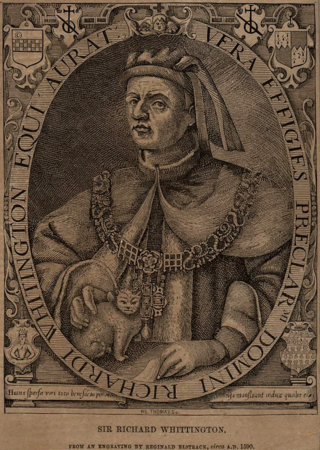
Richard Whittington of the parish of St Michael Paternoster Royal, City of London, was an English merchant and a politician of the late medieval period. He is also the real-life inspiration for the English folk tale Dick Whittington and His Cat. He was four times Lord Mayor of London, a member of parliament and a Sheriff of London. In his lifetime he financed a number of public projects, such as drainage systems in poor areas of medieval London, and a hospital ward for unmarried mothers. He bequeathed his fortune to form the Charity of Sir Richard Whittington which, nearly 600 years later, continues to assist people in need.

The Worshipful Company of Vintners is one of the oldest Livery Companies of the City of London, England, thought to date back to the 12th century. It is one of the "Great Twelve" livery companies of London, and its motto is Vinum Exhilarat Animum, Latin for "Wine Cheers the Spirit". One of the more peculiar rights of the Company involves the ceremony of swan upping.
Aldersgate is a Ward of the City of London, named after one of the northern gates in the London Wall which once enclosed the City.
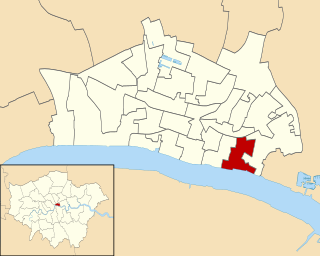
Billingsgate is one of the 25 Wards of the City of London. This small City Ward is situated on the north bank of the River Thames between London Bridge and Tower Bridge in the south-east of the Square Mile.

Archway is an area of north London, England, in the London Borough of Islington 3.8 miles (6 km) north of Charing Cross. It straddles the A1 and is named after a local landmark, the high, single-arched Archway Bridge which crossed the road in a cutting to the north. It has a modern commercial hub around Vantage Point and Archway tube station.
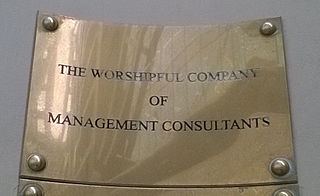
The Worshipful Company of Management Consultants is one of the Livery Companies of the City of London. It draws its memberships from practising management consultants and has close links to the Management Consultancies Association and the Institute of Management Consultancy. The Company's motto is 'Change through Wisdom'.

St James Garlickhythe is a Church of England parish church in Vintry ward of the City of London, nicknamed "Wren's lantern" owing to its profusion of windows.

St Michael Paternoster Royal is a church in the City of London. The original building, which was first recorded in the 13th century, was destroyed in the Great Fire of London in 1666. The church was rebuilt under the aegis of Sir Christopher Wren. However St Michael's was severely damaged during the London Blitz in the Second World War. It was restored between 1966 and 1968.
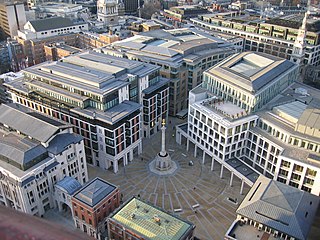
Bread Street is one of the 25 wards of the City of London the name deriving from its principal street, which was anciently the City's bread market; already named Bredstrate for by the records it appears as that in 1302, Edward I announced that "the bakers of Bromley and Stratford-le-Bow [London], and ones already living on the street, were forbidden from selling bread from their own homes or bakeries, and could only do so from Bread Street." The street itself is just under 500 ft in length and now forms the eastern boundary of the ward after the 2003 boundary changes.
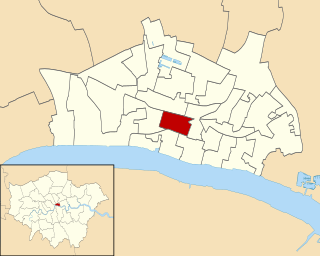
Cordwainer is a small, almost rectangular-shaped ward in the City of London. It is named after the cordwainers, the professional shoemakers who historically lived and worked in this particular area of London; there is a Livery Company for the trade — the Worshipful Company of Cordwainers. The ward is sometimes referred to as the "Cordwainers' ward".
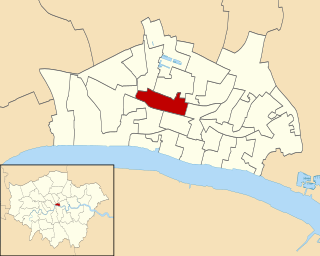
Cheap is a small ward in the City of London. It stretches west to east from King Edward Street, the border with Farringdon Within ward, to Old Jewry, which adjoins Walbrook; and north to south from Gresham Street, the border with Aldersgate and Bassishaw wards, to Cheapside, the boundary with Cordwainer and Bread Street wards. The name Cheap derives from the Old English word "chep" for "market".

Langbourn is one of the 25 ancient wards of the City of London. It reputedly is named after a buried stream in the vicinity.

All Hallows, Honey Lane was a parish church in the City of London, England. Of medieval origin, it was destroyed in the Great Fire of London in 1666 and not rebuilt; the site became part of Honey Lane Market, which was in turn partially cleared to make way for the City of London School in the 19th century. Much of the area was destroyed during the bombing in World War II and has been redeveloped. The name Honey Lane is retained in a nearby walkway.

Coleman Street is one of the 25 ancient wards of the City of London and lies on the City's northern boundary with the London Borough of Islington.

Dowgate, also referred to as Downgate and Downegate, is a small ward in the City of London, the historic and financial centre of London. The ward is bounded to the east by Swan Lane and Laurence Poutney Lane, to the south by the River Thames, to the west by Cousin Lane and College Hill, and to the north by Cannon Street. It is where the "lost" Walbrook watercourse emptied into the Thames.

Queenhithe is a small and ancient ward of the City of London, situated by the River Thames and to the south of St. Paul's Cathedral. The Millennium Bridge crosses into the City at Queenhithe.

Tower is one of the 25 wards of the City of London and takes its name from its proximity to the Tower of London. The ward covers the area of the City that is closest to the Tower.

St Michael's Wood Street was a church and parish of medieval origin in Cripplegate Ward in the City of London, and is first mentioned in 1225 as St. Michael de Wudestrate. It stood on the west side of Wood Street, initially with a frontage on Huggin Lane but later on Wood Street itself.
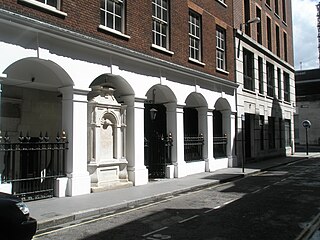
St John the Baptist upon Walbrook was a parish church in the City of London. It stood in Walbrook Ward, with parts of the parish extending into Cordwainer, Dowgate, and Vintry Wards. Of medieval origin, it was destroyed in the Great Fire of London in 1666 and not rebuilt.

The City of London is divided into 25 wards. The city is the historic core of the much wider metropolis of Greater London, with an ancient and sui generis form of local government, which avoided the many local government reforms elsewhere in the country in the 19th and 20th centuries. Unlike other modern English local authorities, the City of London Corporation has two council bodies: the now largely ceremonial Court of Aldermen, and the Court of Common Council.






















